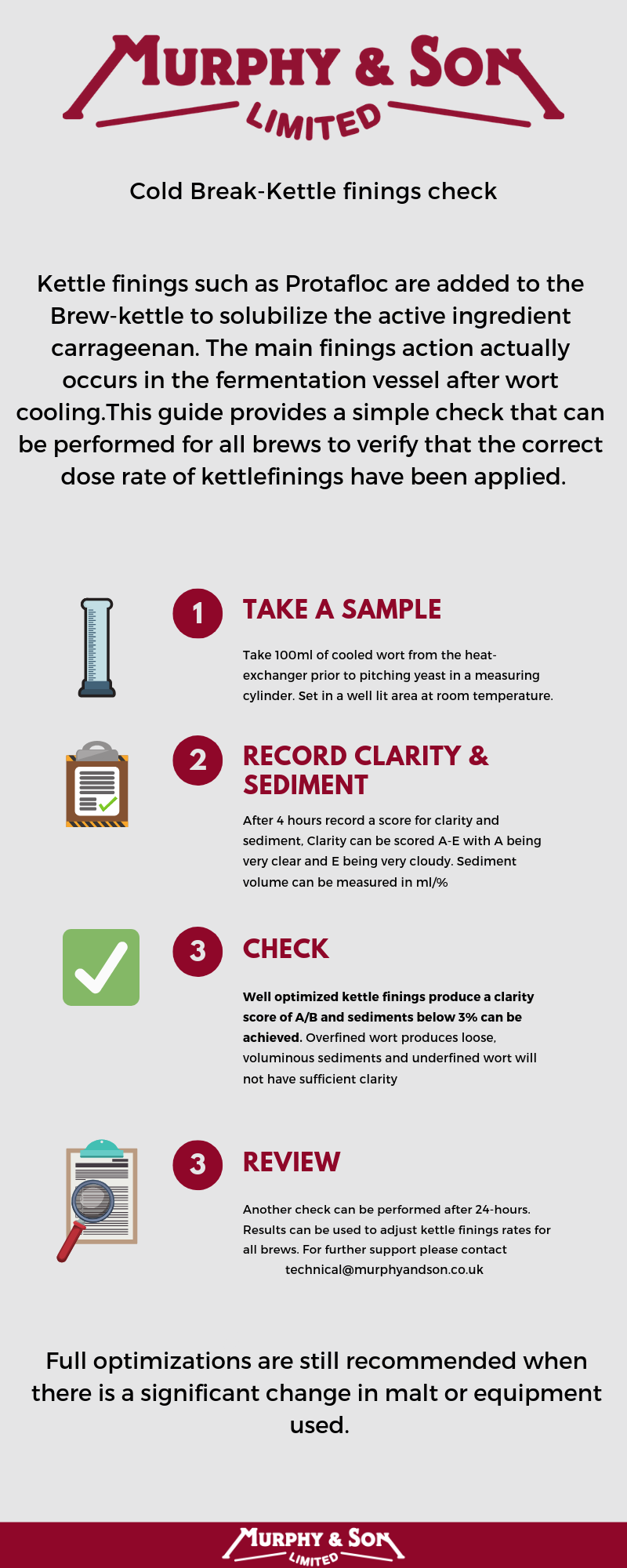

Be it Brexit, Climate Change and implications for beer production, business rates, reported lack of beer drinking millennials or the long running duty debate it’s not an easy time to run a business crafting our national beverage. Our founder AJ Murphy was a great champion of the Brewing and science industries, in an article looking forward to the year of 1922 he called for “a complete removal of the millstone of Bureaucratic control and terrifying taxation”.
Uncertainty with Brexit has meant that retailers, distributors and many brewers are starting to make to stockpile beer to avoid shortages. This is going to mean that more beer will be consumed further into the shelf life. With greater competition for shelf space and a very knowledgeable and vocal consumer, brewers need to ensure their beer is in top condition when purchased right up to the best before date.
Here are our five top tips for brewers big and small to keep beer at its best!

Beer stability starts right at the beginning of life in the brewhouse. Communications with suppliers to know when things are changing is vitally important. With the increasingly changeable climate, changes in malt and hops are set to be more of an annual challenge for brewers. Intimate knowledge of these ingredients, their analysis and how they affect your product is a great start to make changes as and when required. Of particular note at present is the nitrogen levels of malt which are set to increase with the switch to the new harvest. This increase in protein is something that needs careful management to avoid unwanted hazes and filtration problems further in the process.
As a brewer trust your judgement, don’t use any raw materials you aren’t happy with, old, cheesy oxidised hops or some malt that doesn’t quite look or taste right is not worth the issues they could cause further down the line.
Remember – Water also plays a significant role in stability; Murphy & Son Ltd continue to offer one free liquor analysis with recommendations a year to help keep your water in spec!

Any changes in raw materials and processes can alter the effectiveness of finings and the dose rates and use should be examined accordingly. Copper finings, such as Protafloc, are of great importance for managing haze forming proteins in the final beer. Particular attention needs to be given with any malt changes i.e. the introduction of new seasons malt or change of variety. A full guide to the optimisation of copper finings can be seen here.


Brewers Clarity (Clarex) is a very selective endopeptidase that targets haze forming proteins, cleaving off the proline end that bonds to polyphenols which stops the formation of chill and permanent haze forming complexes. It is very easy to use by simply adding 1-3 g/hl to wort when it is collected in fermentation vessel. As it’s specific it doesn’t affect beer foam and many breweries large and small are finding it a great product for reducing conditioning time and helping chill stability.
Murphy and Son have made this product available to the micro brewing market by offering it in 1Kg packs as Brewers Clarity
Added Bonus – Brewers Clarity (Clarex) is also great for production of Gluten Free Beers.
Have you considered trialling Murphy’s Kompactikleer?
Our isinglass and silica formulation for extra chill stability in cask beers and nice compact sediments and extra protein removal in tank fining applications.
Top Tip – Murphy’s are happy to carry out free of charge optimisations for customers using our products including our new vegan fining tank fining Super F.

We can’t live without it but in beer post fermentation oxygen is asking for trouble. Oxygen in beer at package will catalyse the polymerisation reactions of polyphenols making them more likely to form haze forming complexes with proteins, there’s also nothing worse than a mouthful of oxidised beer bursting with papery, stale, aged flavours.
Oxygen meters are fantastic tools for getting around the brewery sampling through the process to pin point any problematic areas. Although there are some companies that rent these bits of kits out, they are expensive but not having one should not stop you reviewing your brewery looking for potential dissolved oxygen trouble spots.
A few things to look out for to aid reduction of dissolved oxygen (DO) pick up include: Blanketing of tanks with CO2 (including when dry hopping); correct chasing through of pipework before transfers; ensuring pipework and connections leak free; avoiding running pumps dry; correct filling of Arlingtons and appropriate packaging methods.
Tip-Reduce the effects of oxidation with the addition of Ascorbic Acid to your beer post fermentation.

Every brewer is familiar with how their beer tastes, looks and smells as fresh, but it is just as important to understand the quality of the beer throughout the entire shelf-life. Retained samples of the beer examined regularly throughout the duration of the declared shelf-life are a hugely import tool to build knowledge of the behaviour of beer in package. This will help drive improvements, monitor all aspects of stability (colloidal, microbiological and flavour) and show any potential problems for beer out in trade. Also consider introducing a forced aging test (there are quite a few methods out there) where beer is warm stored for a period of time to try and accelerate the reactions which would happen later in shelf life. Don’t forget to get out and about into the on and off trade to evaluate your products, there is no substitution for tasting beer as your customers do!
We’re here to help – our laboratory is able to carry out a full range of analysis such as tannometer tests, polyphenol measurement, full microbiological assessment and Chapon testing to help build up a picture of how it will behave in the trade.

